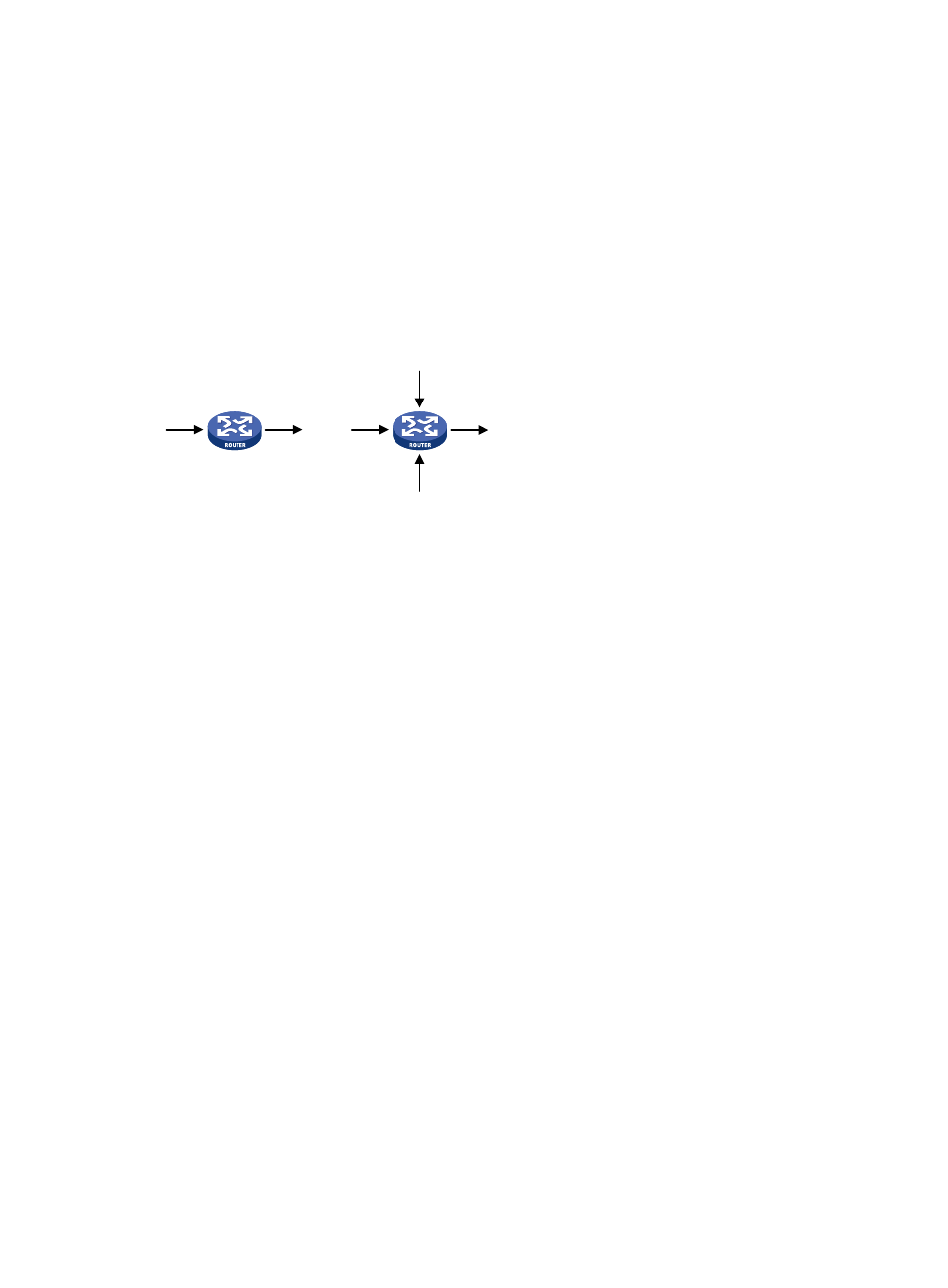Congestion: causes, impacts, and countermeasures, Causes, Impacts – H3C Technologies H3C SR8800 User Manual
Page 29: Countermeasures

20
Congestion: causes, impacts, and countermeasures
Network congestion is a key factor to degrade the service quality of a traditional network. Congestion
refers to the fact that the forwarding rates are decreased due to insufficient resources, resulting in extra
delay and degrading the quality.
Causes
Congestion easily occurs in complex packet switching circumstances in the Internet,
shows some
common cases.
Figure 4 Traffic congestion causes
•
The traffic enters a router from a high-speed link and is forwarded over a low-speed link.
•
The packet flows enter a router from several interfaces and are forwarded out an interface, whose
speed is smaller than the sum of the incoming interfaces.
When traffic arrives at the line speed, congestion may occur due to the network resource bottleneck.
Besides the link bandwidth bottleneck, congestion can also be caused by resource shortages (such as
insufficient processor time, buffer, and memory). In addition, congestion may occur if the arriving traffic
is not managed efficiently, thus resulting in inadequate network resources.
Impacts
Congestion can bring the following negative results:
•
Increased delay and jitter during packet transmission
•
Decreased network throughput and resource use efficiency
•
Network resource (memory, in particular) exhaustion and even system breakdown
Congestion hinders resource assignment for traffic and degrades service performance. Congestion is
unavoidable in switched networks and multi-user application environments. To improve the service
performance of your network, you must address the congestion issues.
Countermeasures
A simple solution for congestion is to increase network bandwidth. However, this solution cannot solve all
the problems that cause congestion because you cannot increase network bandwidth infinitely.
A more effective solution is to provide differentiated services for different applications through traffic
control and resource allocation. In this way, resources can be used more properly. During resources
allocation and traffic control, the direct or indirect factors that might cause network congestion must be
controlled to reduce the probability of congestion. Once congestion occurs, resource allocation must be
100M > 10M
(100M + 10M + 50M) > 100M
100M
100M
100M
50M
10M
10M
(1)
(2)
